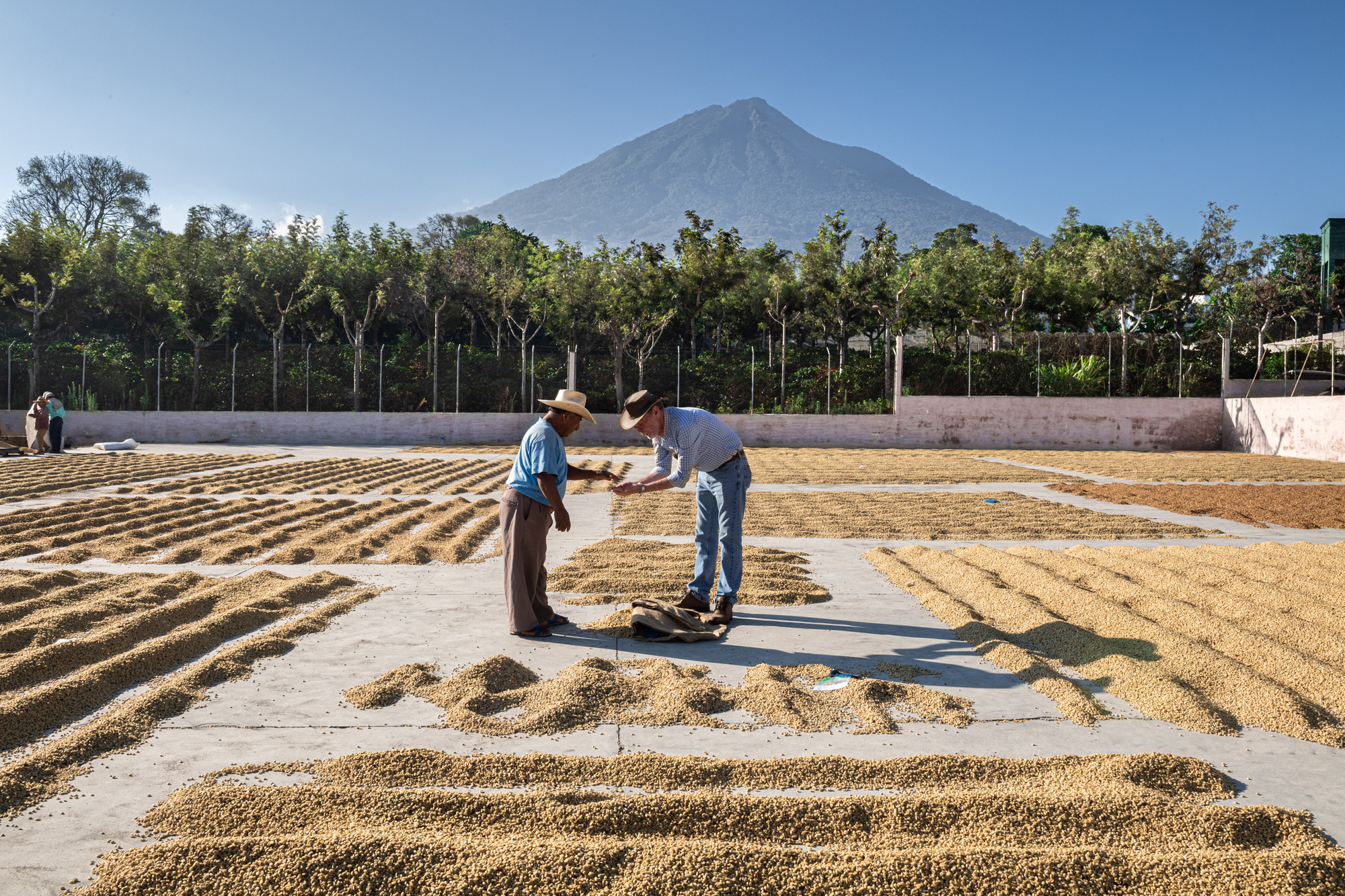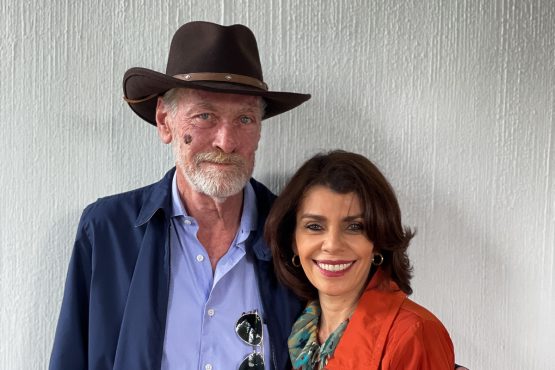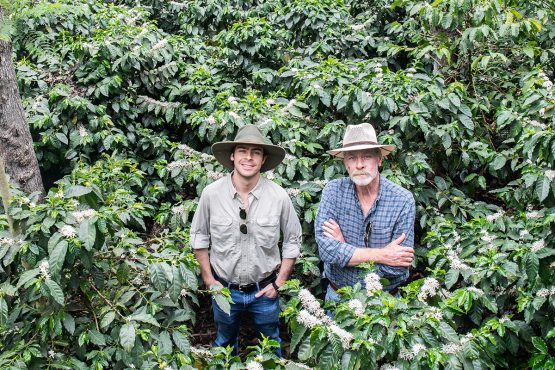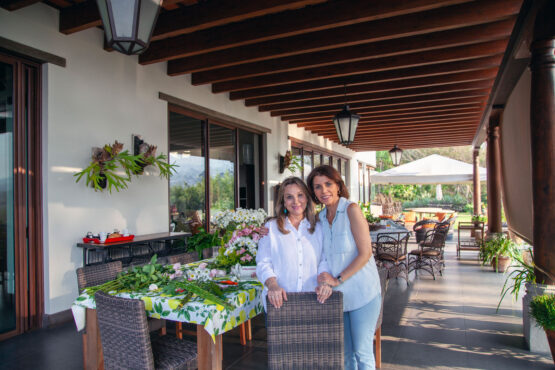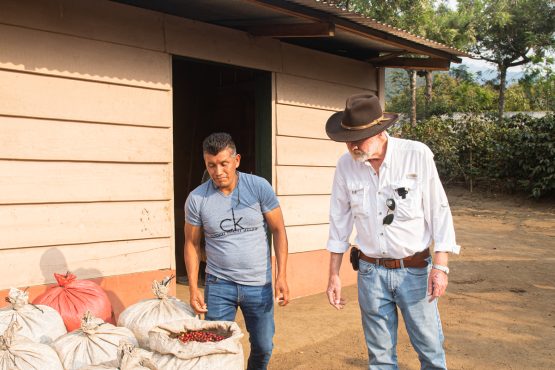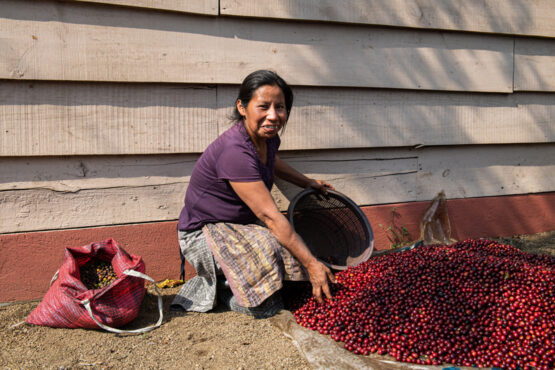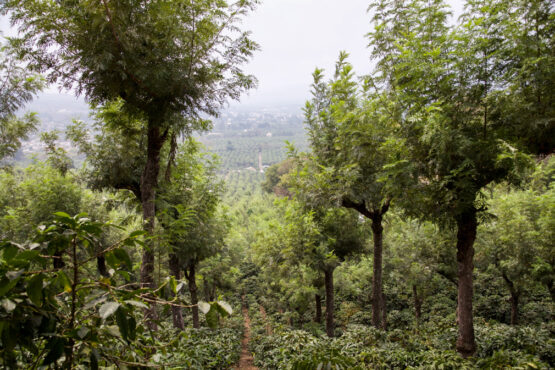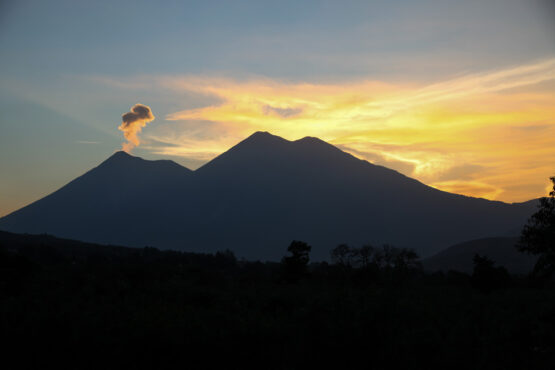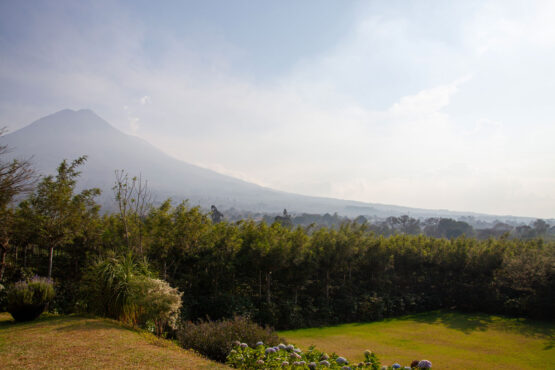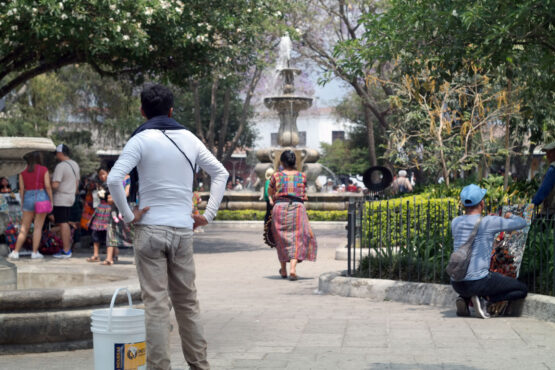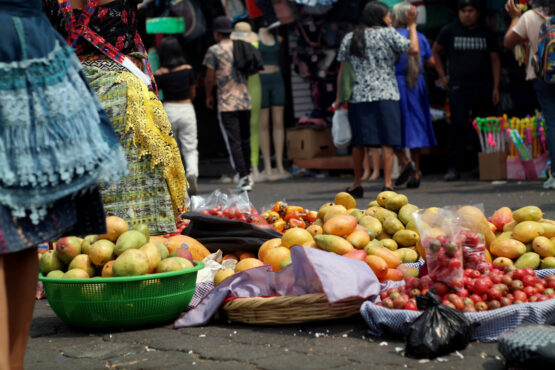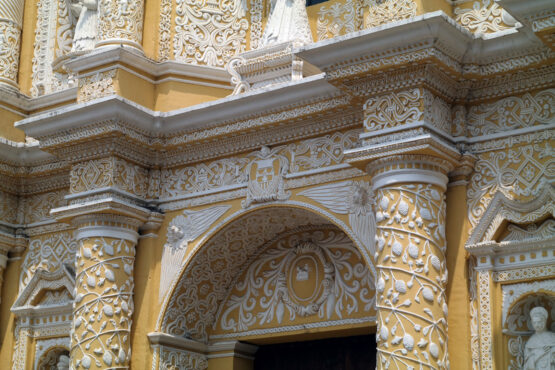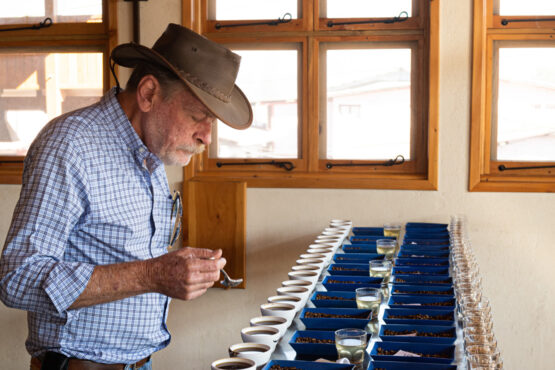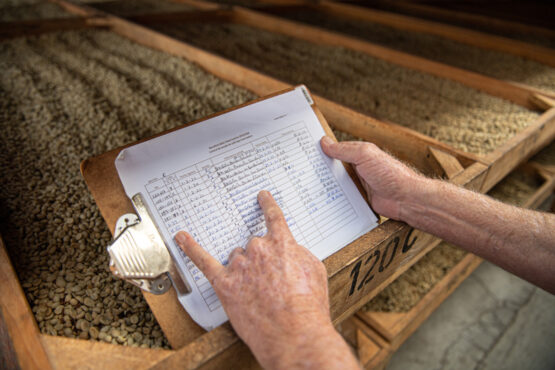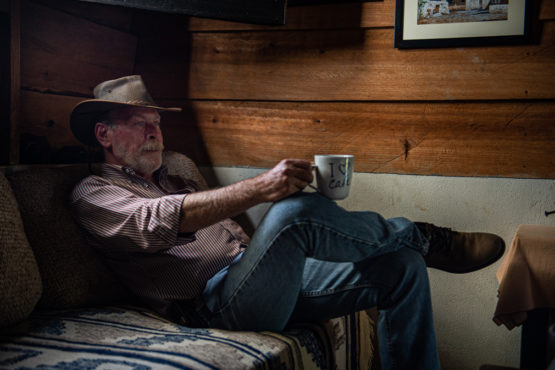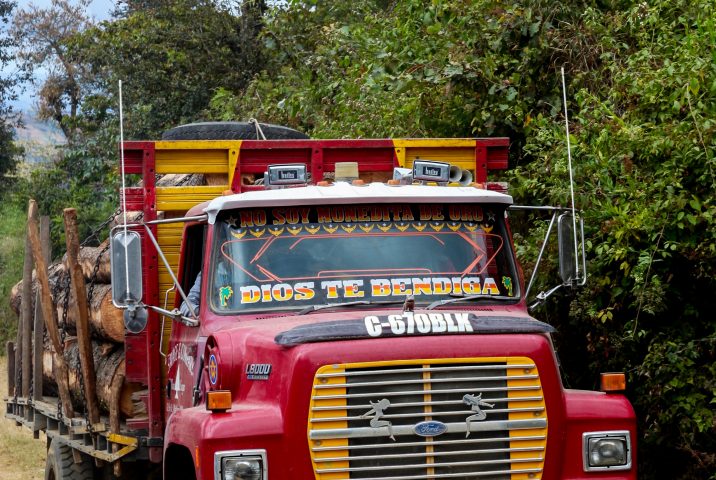La Soledad
Pear, dried apricot and milk chocolate. Well-structured with syrupy mouthfeel and lingering florals.
La Soledad is a beautiful farm that sits on the slopes of Hunahpú Volcano (also called Agua in Spanish) in the heart of Antigua. The estate is owned by Ana Lucia Zelaya and her husband Rony Asensio. The two make a dynamic coffee duo—Ana Lucia is a fourth-generation coffee producer from a well-established and long-standing coffee producing family. Her husband, Rony, also comes from coffee-producing heritage and is a talented, passionate and meticulous farmer who works incredibly hard to produce great coffee. He owns and manages several farms, and takes great pride in doing things to the highest standard.
La Soledad was originally part of the larger Finca Santa Clara, founded in 1908 by Lucia’s great-grandfather, Sr. Luis Pedro Aguirre Matheu. His farm was passed down through the generations until the late 1990s when the farm was finally divided between the four children of Ricardo Zelaya Aguirre. At this time, Lucia inherited a small section of the farm and called it ‘La Soledad,’ with husband Rony looking after operations.
Coffee has always been part of Rony’s life. He grew up around coffee in Antigua, because his father was also a coffee farmer. When he was young, Rony’s father sadly passed away, and the farm had to be sold. Rony knew one day he would return to coffee and follow in his father’s footsteps, and eventually purchased the farm Santa Ana La Huerta in Guatemala’s Sierra de Las Minas region and later spearheaded operations at Lucia’s farm La Soledad.
Before Rony and Lucia took over the plot, Ricardo Zelaya (Lucia’s brother) had been managing it as an annex to Santa Clara — propagating it with Bourbon variety trees. Once Rony took over operations, he began planting more of the Caturra variety, because he believed it would be more productive. As he explained on a recent visit, “When I began running the farm, I focused on planting Caturra and doubled the amount of trees per hectare. Bourbon’s quality is spectacular, but we all know it can be prone to disease. That’s why I prefer Caturra, it’s an alternative with higher productivity and good potential for quality.”
Rony and Lucia have a wonderful team of people who support them on their farm. The dynamic between each of them is very inclusive and respectful, and the loyalty and happiness of each team member is evident every time we visit. Day to day operations at La Soledad are managed by Julio Pablo Damián who has worked and lived on the farm since 2010. During the harvest, around twenty-five seasonal workers are employed to help pick the cherries. These pickers are highly skilled, and most return every year to work on the farm. As he tells La Soledad staff at the start of the harvest, “The boss upstairs is in charge of 99% of everything that affects all of us who work in agriculture. If we only have 1% left to do, let’s do it right!”
Due to varying altitude of La Soledad, the coffee cherries ripen at different times during the harvest, so Julio instructs his team of pickers to do around eight passes of the entire farm during the season to ensure only the ripest cherries are selected. When walking through the estate, Rony is always happy to point to cherries that he considers to be ready for the picking, “Some people prefer them a little more red — but I prefer to pick them when they’re almost purple. Some years that can be a little risky, because it can over-ripen if you’re not careful, but the flavour and consistency for roasting is better when coffee is perfectly ripe.”
All the coffee trees at La Soledad grow under a canopy of Grevillea shade trees, which protect the coffee trees from frost and too much sun and encourage the coffee to ripen slowly. Rony keeps careful track of yearly predictions from Guatemala’s weather bureau and plans the amount of shade necessary for each season accordingly. The estate has limited access to water — it mostly comes from an artisanal well found in the property — and Rony relies on shade as his main tool to protect the trees from Antigua’s sun.
Rony also maintains a strict coffee pruning regimen at La Soledad, removing around a third of the coffee branches each year to help combat disease and ensure efficient production. This pruning program is part of a broader, integrated farm management program that has seen a dramatic decrease in the reliance on chemical inputs for the farm. Soil health is key in Rony’s agricultural practices, as he believes “the soil has to be above everyone, even the owner or manager of the farm. That’s why I’m very conservative and try to stay as close to organic as possible.”
ABOUT ANTIGUA GUATEMALA
The Antigua valley is bounded by three volcanoes – Hunahpú (also called Agua in Spanish), Chi Q’aq’ (also called Fuego) and Acatenango. Of the three, Chi Q’aq’ is the only one still active. On many visits, we have been in town at times the volcano has erupted, adding some chaos to the harvest (in the short term, the ash can stick to the leaves of coffee trees nearby and prevent the trees from photosynthesising), but ultimately providing mineral-rich ash for Antigua’s soil. This volcanic matter helps the soil retain its moisture, offsetting the region’s lower rainfall.
Coffee from Antigua is perhaps Guatemala’s best-known and most celebrated and, as such, typically attracts higher prices than coffee from other regions. They tend to be heavier bodied, with notes of dark chocolate, brown sugar and red apple. In 2000, Antigua received a Denomination of Origin to recognise the region as distinct, and to prevent other coffees from being marketed as Antiguan.
The region surrounding Antigua Guatemala is the traditional land of the Kaqchikel people, who were once one of Guatemala’s largest Mayan kingdoms. Their ancient capital, Iximché, is located some 50km from the Antigua valley, and was considered one of the country’s most important cities before the Spanish invasion of Guatemala. The Kaqchikel are remarkable historians, and their oral and written traditions (compiled in The Annals of the Kaqchikel) have been an important resource in preserving the cultural heritage of many of Guatemala’s indigenous communities.
HOW THIS COFFEE WAS PROCESSED
Once the perfectly ripe cherries are picked, the coffee is processed at the Zelaya’s beneficio (mill) Bella Vista in the traditional washed manner. The cherries are mechanically pulped before they’re fermented for 24 hours to remove the mucilage. The beans are then washed to remove any remaining pulp and carefully dried first on a patio for a couple of days, and then on raised beds in a greenhouse, which ensures the coffee is dried slowly and evenly.
WHY WE LOVE IT
This is a coffee we absolutely love and have wanted to buy since cupping it at the Cup of Excellence (it placed in 2009 and 2012), and visiting La Soledad with Rony in 2013. We were lucky enough to get it for the first time in 2014 and have purchased it every year since.
One of the things we love most about Rony and Lucia is that they take great pride and care in doing everything to the highest standard. “Everything we do is done with love.” Rony explained on a recent trip. This is very evident in everything that Rony does on the farm: his attention to detail, commitment to constantly improving, and understanding of best agricultural practices are hard to fault, and we feel very grateful to work with him.
On our most recent visits to La Soledad, we have been fortunate to spend time in Lucia and Rony’s home that they built on the farm in 2017. The house sits right in the middle of the plantation with a view out to Volcan de Fuego, which still occasionally erupts with clouds of smoke. The coffee trees come right up to the edge of the house, so it feels like you’re living right in the middle of the coffee farm. Currently, Lucia and Rony still live in Guatemala City, but they hope to retire to La Soledad in the coming years. “This is where we are happiest,” Lucia explains. “Especially Rony. He lives for coffee.”
